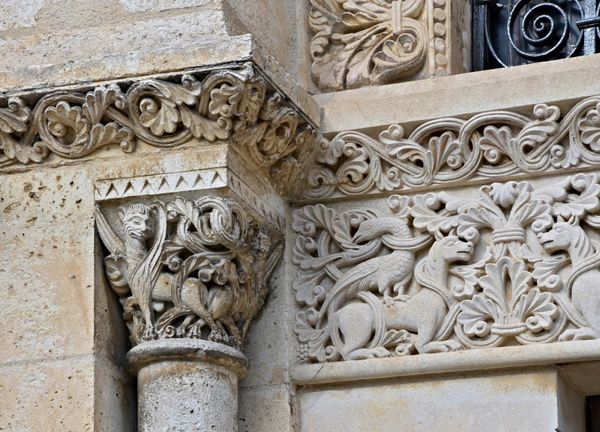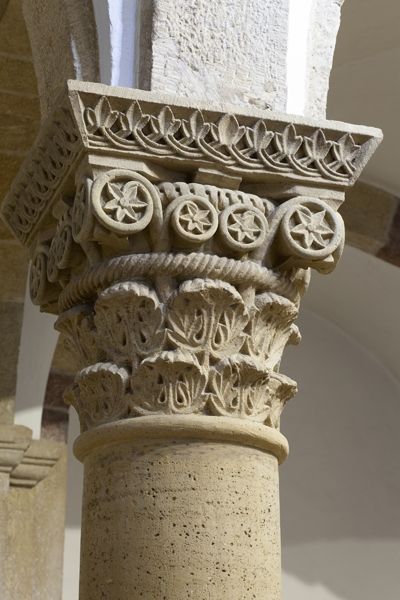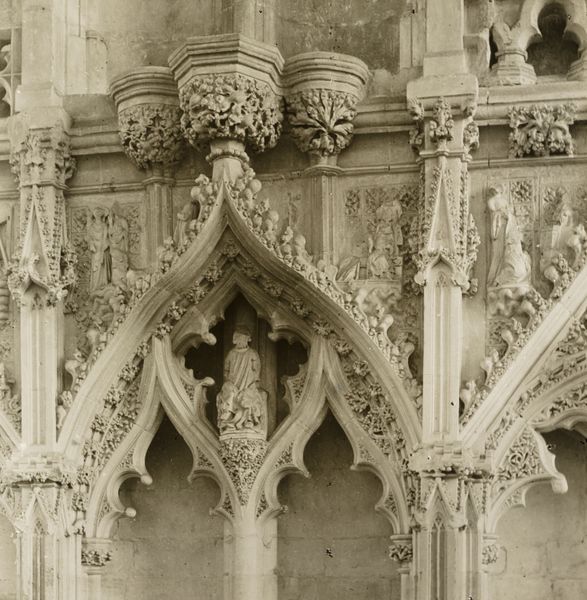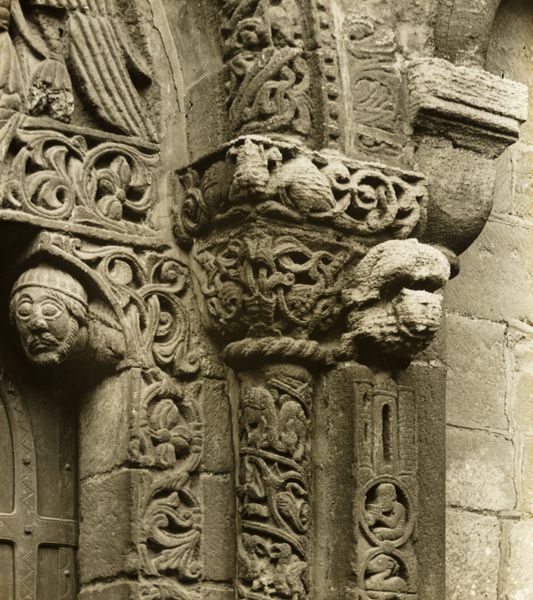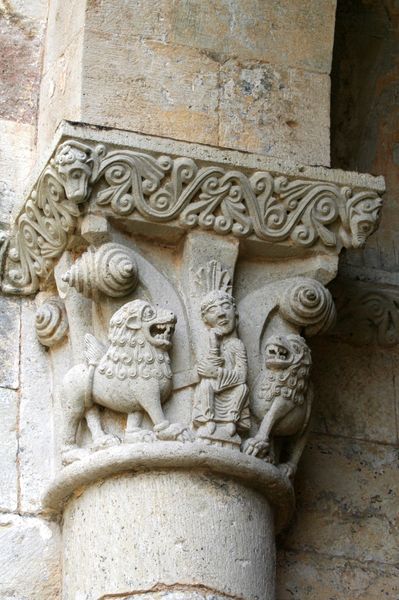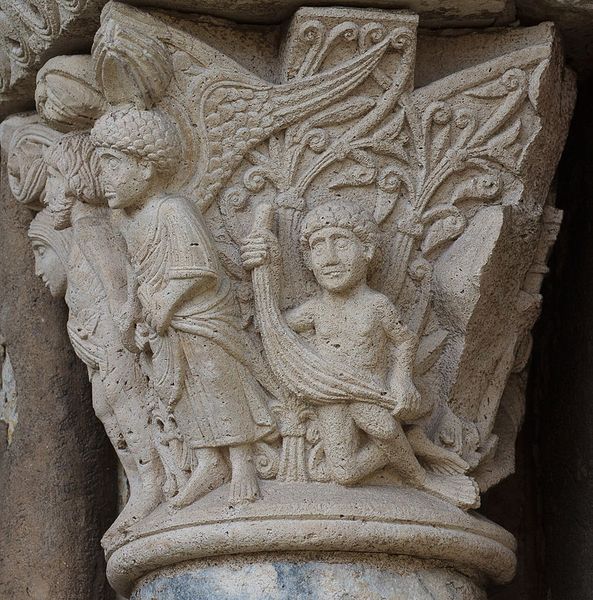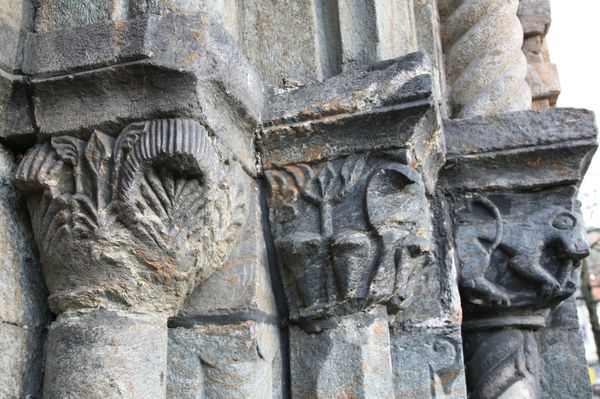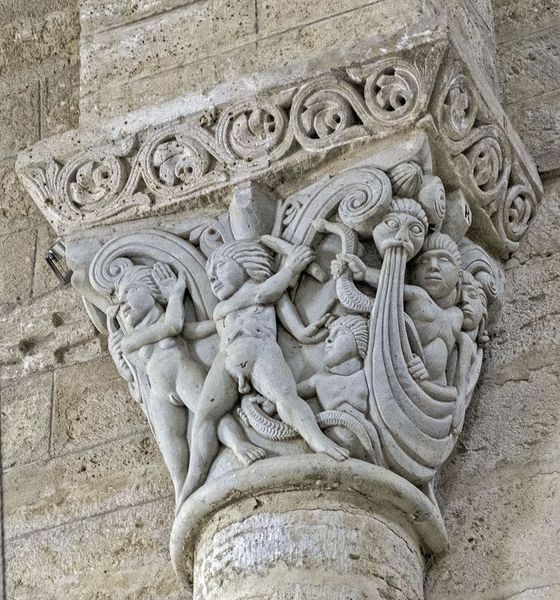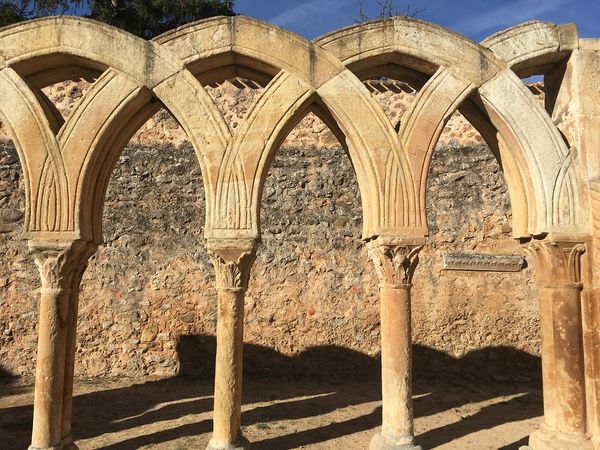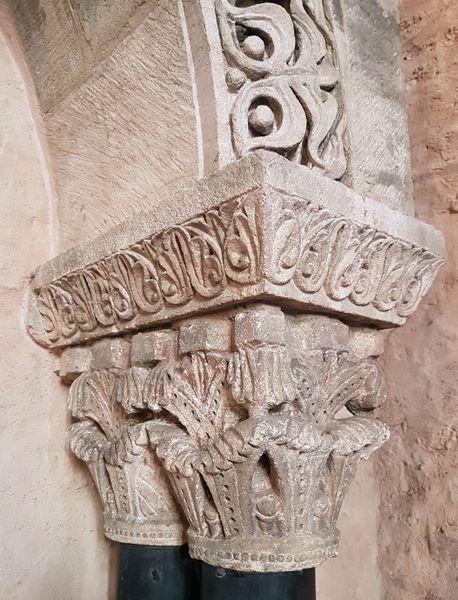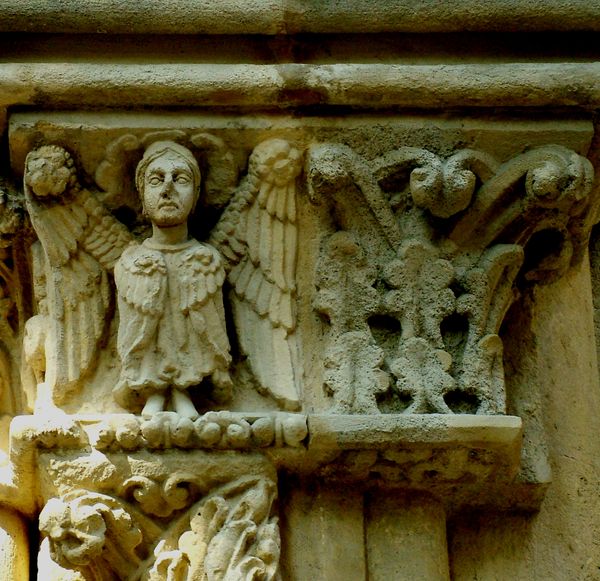
carving, sculpture, architecture
#
medieval
#
carving
#
sculpture
#
historic architecture
#
form
#
romanesque
#
geometric
#
column
#
sculpture
#
arch
#
line
#
architecture
#
building
Copyright: Public domain
These intricately carved capitals in the Church of the Holy Sepulchre in Jerusalem were made by Romanesque architects sometime between 1000 and 1250. Look closely at how the architects of the Church used stone to evoke a sense of the sacred. The floral and geometric motifs carved into these capitals create a visual language, speaking to the cultural exchange and artistic styles prevalent during the Romanesque period. The Church of the Holy Sepulchre, built on what is believed to be the site of Jesus' crucifixion and resurrection, holds immense religious significance. The Romanesque architectural style, with its rounded arches and massive forms, often reflects the power and authority of the church. It invites contemplation on the social and religious norms of its time. To understand these capitals better, we can delve into the records of the religious orders and the historical chronicles of Jerusalem. The meaning of these capitals becomes clear when we understand their original social and institutional context.
Comments
No comments
Be the first to comment and join the conversation on the ultimate creative platform.
